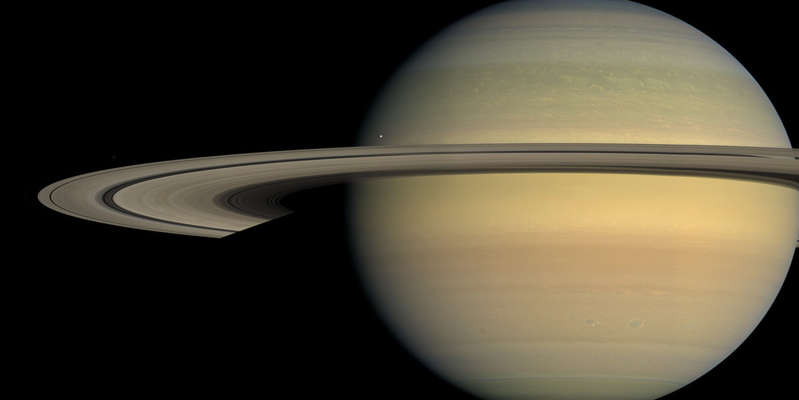
No solid core was found in the bowels of Saturn
Astrophysicists Christopher Mankovich and Jim Fuller of the California Institute of Technology made an unexpected discovery about the internal structure of Jupiter. To do this, they analyzed the vibrations of its rings, reports arXiv.
The data showed that the core of the planet is not a dense ball of nickel and iron, as is commonly believed, but a fuzzy region, consisting mainly of hydrogen and helium. It occupies about 60% of the radius of Saturn and contains 17 Earth masses of ice and rock. The study could change scientists' assumptions about the structure and history of the formation of Saturn.
The authors proceeded from the fact that the processes inside the giant planet affect its gravitational field. So, on Earth, seismic waves are used to study the interior. Similar waves on another planet can indicate the peculiarities of its structure.
Several years ago, astrophysicists noticed characteristic features in Saturn's C ring, the innermost of its main rings. They were not associated with the satellites of the planet, since they are on the outside. Scientists have come to the conclusion that the reason – in the vibrations deep in the bowels of Saturn.
As part of the new study, scientists carefully analyzed the parameters of the previously described internal wave of ring C. Its frequency was much lower than theoretical calculations suggested.
“Our models impose severe restrictions on the mass and size of the heavy elements of Saturn's core,” the authors noted.
New calculations have shown that the mass of the core is about 55 times the mass of the Earth. 17 Earth masses are rock and ice, the rest is mainly hydrogen and helium. Substances are not static, but gradually disperse and mix. In the very center, there is a denser concentration of heavy elements.
These data are not entirely consistent with generally accepted models of planetary formation. It is believed that they arise due to the gradual adhesion (accretion) of dust particles. In the case of gas planets, the heavier material sinks towards the center, forming a solid core, while the lighter gas rises to the outer regions.
If Jupiter's core is indeed scattered rather than solid, then scientists will need more research to understand how it could have come about. Note that the moons of Saturn are no less interesting to study than himself. So, on Enceladus they found an ocean with turbulent currents.

